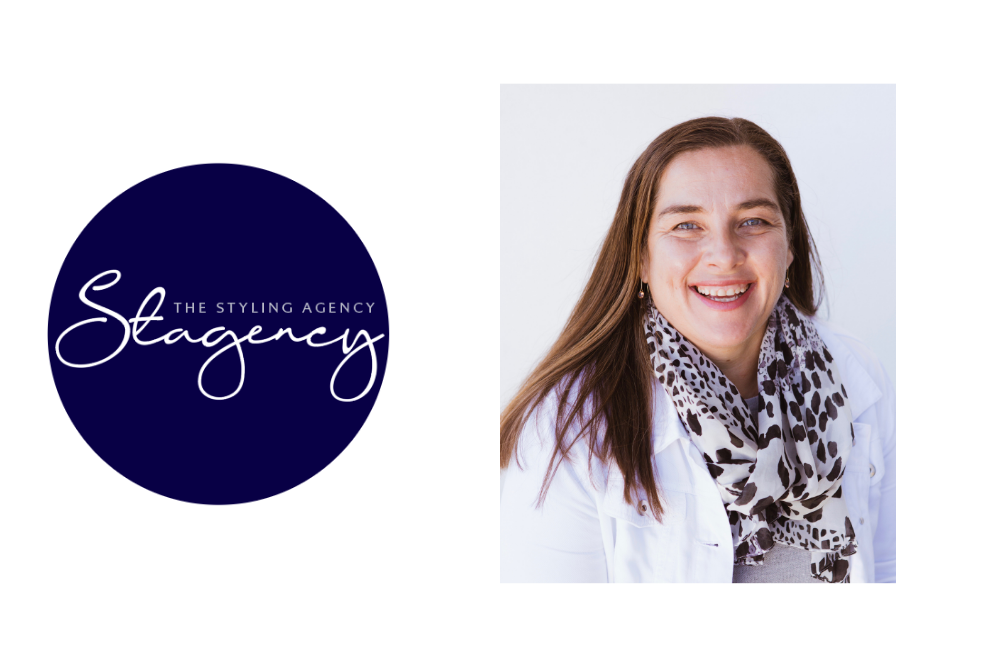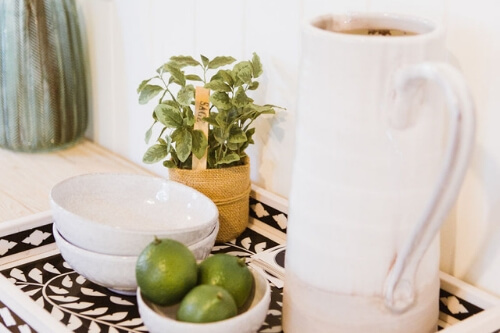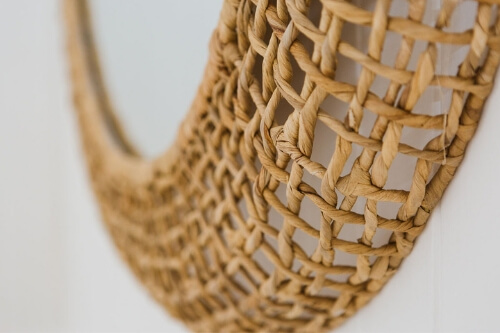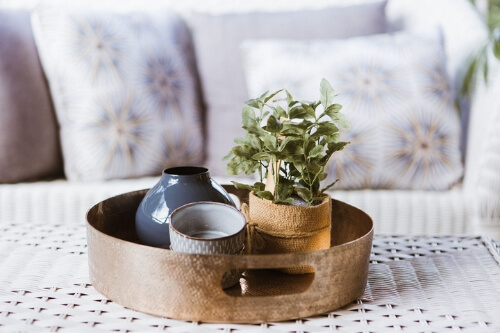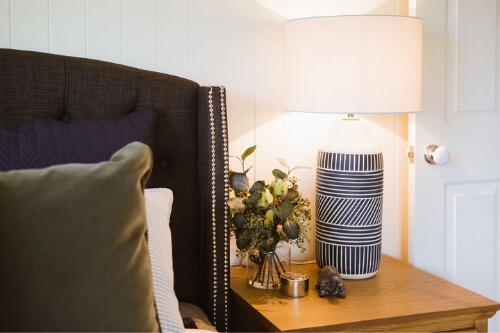What is interior styling?
Interior styling according to wikipedia is the art and practice of curating and arranging a space to create an aesthetically pleasing and functional environment. It involves carefully selecting and arranging furniture, decor, colors, textures, and other elements to transform a room or an entire property into a visually appealing and cohesive space. All sounds a bit posh but basically they make your spaces come to life and look beautiful.
Interior stylists, also known as interior decorators or designers, work closely with clients to understand their preferences, lifestyle, and needs. They then use their expertise and creativity to curate a personalised design that reflects the client’s personality and meets their specific requirements.
Key aspects of interior styling include:
- Space Planning: Interior stylists in Brisbane consider the layout of the space and how different furniture pieces and decor items will fit together harmoniously. They ensure that the flow of the room is optimised for both aesthetics and functionality.
- Color Palette Selection: Choosing the right color scheme is crucial in creating the desired atmosphere and mood of a space. Interior stylists help clients select colors that complement each other and align with the overall design concept.
- Furniture Selection and Placement: Stylists assist in choosing furniture that suits the style and function of the space. They take into account the scale and proportions of furniture pieces and strategically place them to create a balanced and inviting setting.
- Texture and Pattern Coordination: Mixing and matching textures and patterns can add depth and interest to a room. Interior stylists skilfully combine different materials and patterns to create a visually dynamic space.
- Accessorising: Accessories, such as cushions, rugs, artwork, and decorative objects, play a vital role in completing the look of a space. Interior stylists carefully select and place accessories to enhance the overall design and add personality to the room.
- Lighting: The right lighting can significantly impact the ambiance of a space. Interior stylists consider both natural and artificial lighting sources and select appropriate fixtures to create the desired mood and functionality.
- Budget Management: Interior stylists work within the client’s budget and find cost-effective solutions without compromising on style and quality.
Interior styling in Brisbane is not limited to residential spaces; it also extends to commercial properties, event spaces, and home staging for real estate purposes. Whether it’s a single room makeover or a comprehensive interior design project, interior styling helps create spaces that are both beautiful and functional, tailored to the individual preferences and needs of the client.
What is interior design?
Interior design is a multifaceted profession that involves the creative and technical process of enhancing the interior spaces of buildings to achieve a more aesthetically pleasing and functional environment. The primary goal of interior design is to create spaces that are visually appealing, comfortable, and well-suited to the needs and preferences of the occupants.
Interior designers, also known as interior decorators, are trained professionals who possess a unique blend of artistic creativity, technical knowledge, and problem-solving skills. They work closely with clients to understand their requirements, lifestyle, and design preferences before conceptualising and implementing design solutions.
Key aspects of interior design include:
- Space Planning: Interior designers analyse the available space and create a layout that optimises the flow and functionality of the area. They consider factors such as traffic patterns, furniture arrangement, and spatial relationships to ensure efficient use of space.
- Color and Material Selection: Interior designers choose appropriate color palettes and materials to create the desired atmosphere and style in a space. They consider the interaction of colors, textures, and materials to achieve a harmonious and cohesive design.
- Furniture and Fixture Selection: Selecting furniture, fixtures, and fittings that match the design concept and suit the client’s needs is a crucial aspect of interior design. Designers consider the scale, proportion, and style of these elements to complement the overall design.
- Lighting Design: Interior designers plan and implement lighting solutions to enhance the ambiance and functionality of a space. They incorporate both natural and artificial lighting sources and choose fixtures that add to the overall design aesthetics.
- Accessories and Décor: Adding the right accessories, such as artwork, rugs, curtains, and decorative objects, helps elevate the design and add a personal touch to the space.
- Sustainable Design: Many interior designers focus on eco-friendly and sustainable design principles to reduce the environmental impact of their projects. They may use environmentally friendly materials, energy-efficient lighting, and sustainable practices to create eco-conscious interiors.
- Project Management: Interior designers often work in collaboration with architects, contractors, and other professionals to ensure the smooth execution of the design plan. They may oversee the project from start to finish, coordinating various aspects of the design process.
Interior design is not limited to residential spaces but extends to commercial, hospitality, healthcare, and institutional settings. Whether it’s designing a home, an office, a restaurant, or a hotel, interior design plays a pivotal role in creating spaces that are not only visually pleasing but also functional, comfortable, and reflective of the occupants’ lifestyle and personality.
Why do people confuse interior styling and interior design?
People often confuse interior styling and interior design because both fields involve creating aesthetically pleasing and functional spaces. While there are similarities between the two, they are distinct disciplines with different focuses and approaches. Here are some reasons why the confusion may arise:
- Overlapping Functions: Interior styling and interior design both deal with the arrangement and selection of furniture, decor, colors, and textures to enhance a space. As a result, people might assume that the roles of interior stylists and interior designers are interchangeable.
- Media Representation: In the media, the terms “interior stylist” and “interior designer” are sometimes used interchangeably or loosely, leading to further confusion among the general public.
- Evolving Roles: The roles of interior stylists and interior designers have evolved over time. Traditionally, interior design was more focused on structural elements, such as spatial planning and building modifications, while interior styling was more about the decorative aspects. However, with changing trends and demands, the lines between the two fields have blurred somewhat.
- Personal Definitions: Some professionals may define themselves as both interior designers and interior stylists, further contributing to the confusion.
To clarify the distinction between the two:
- Interior Design: Interior design is a comprehensive discipline that involves the conceptualisation and execution of entire spaces. Interior designers often work closely with architects to plan the layout, choose finishes, handle building modifications, and address functional and safety considerations. Their expertise extends to structural aspects, such as lighting design and material selection. Interior design encompasses the entire process of creating an interior space, from the initial planning stages to the final execution.
- Interior Styling: Interior styling, on the other hand, is a subset of interior design that focuses primarily on the decorative elements of a space. Interior stylists work with already existing spaces and focus on curating furniture, decor, accessories, and colors to enhance the aesthetics and ambiance. They do not typically handle structural changes or major renovations. Interior styling is more about adding the finishing touches and creating visually appealing compositions.
In essence, while interior design encompasses a broader scope of work, interior styling is a specialised aspect of interior design that centres on the final aesthetic and decorative details of a space. Both fields are valuable and can work in harmony to create well-designed and stylish interiors.
Which one do I need?
The choice between hiring an interior stylist or an interior designer depends on your specific needs, the scope of your project, and your personal preferences. To help you decide which professional would be more suitable for your situation, consider the following factors:
When to Consider Hiring an Interior Stylist:
- Focus on Aesthetics and Decor: If you already have a well-designed space but need help with selecting furniture, decor, color schemes, and accessories to enhance its aesthetics, an interior stylist can be a great choice. They excel at curating and arranging elements to create visually appealing compositions.
- Room Makeovers: If you are looking to refresh the look of a specific room or area without major structural changes, an interior stylist can offer creative solutions and styling expertise.
- Decorative Touches: If you want to add the finishing touches to your space or need assistance in choosing artwork, textiles, and decorative objects, an interior stylist can provide valuable input.
- Budget-Friendly Approach: Interior stylists in Brisbane can work within various budgets and find affordable yet stylish options for your space.
- Quick Updates: If you’re looking for a relatively quick and efficient update to your space, an interior stylist can streamline the process and bring immediate visual impact.
When to Consider Hiring an Interior Designer:
- Comprehensive Design and Planning: If you are starting from scratch or need significant modifications to the layout and structure of your space, an interior designer is the right choice. They can handle space planning, material selection, and lighting design.
- Renovations and Renovating: If your project involves major renovations, an interior designer can work with architects and contractors to ensure that the design vision is implemented correctly.
- Functional Improvements: If your space lacks functionality or needs specific improvements for better organization and utilization, an interior designer can provide space optimisation solutions.
- Customisation and Bespoke Design: If you want personalised and tailored design solutions, an interior designer can create custom furniture, cabinetry, and fixtures to suit your unique needs.
- Project Management: If your project requires coordination with various professionals, an interior designer can act as a project manager, overseeing the entire process and ensuring smooth execution.
- Long-Term Investment: If you view your space as a long-term investment and want a comprehensive, cohesive design that stands the test of time, an interior designer’s expertise is invaluable.
In some cases, interior designers can also offer interior styling services as part of their overall design package. This means you can benefit from both the structural expertise of an interior designer and the creative eye of an interior stylist in one comprehensive service. Though this tends to be an expensive process for this part of the design and interiors works as Interior Designers are considerably more expensive than an Interior Stylist.
Ultimately, whether you choose an interior stylist or an interior designer, it’s essential to communicate your goals, preferences, and budget clearly to ensure you get the best results for your space.

